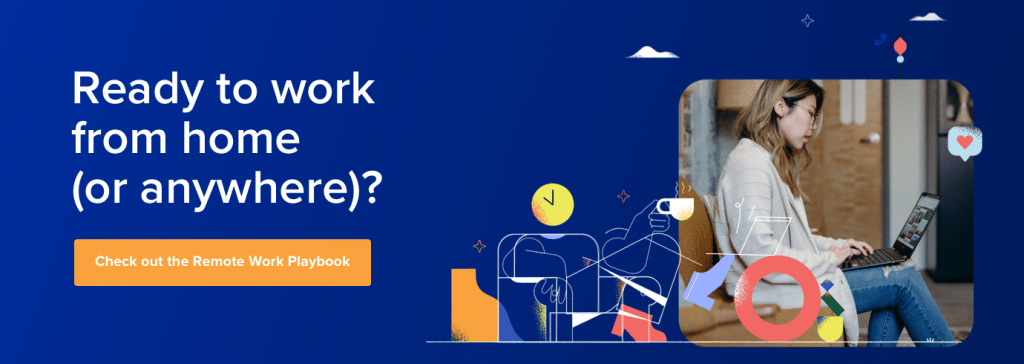It’s been a turbulent year for us in the business world. Just last year, we projected an ordinary, par-for-the-course start to a new decade, with a steady rate of technology adoption and advances to remote work. Obviously, COVD-19 turned that all upside down, and 2020 has been marked by unprecedented uncertainty.
With 2021 right around the corner, however, businesses are already planning for what the office may look like when COVID-19 is over and it’s safe to return. For companies like Facebook and Twitter, offices might look a lot emptier as many employees choose to work remotely forever. For others, offices are still a critical part of their operations.
Expanding remote work
What we do know is: remote work is here to stay. Whether it’s permanent or a hybrid approach (a blend of office and remote work), this massive work-from-home experiment has proved how effective remote work really is—to the point where 55% of employers expect to continue remote work even after COVID-19.
As most businesses have likely realized, allowing remote work isn’t the difficult part—it’s ensuring that employees can work as productively as they would in the office.
The challenge for organizations is facilitating collaboration when teams can work from anywhere and everywhere.
Looking at long-term IT solutions
Life hasn’t been easy since work from home began. From acclimating to new work paradigms to juggling meetings and childcare at the same time, knowledge workers have their hands full. In fact, many report working 48.5 more minutes per day compared to their pre-COVID schedules.
Combined with looking professional in meetings, getting work done, and collaborating with colleagues remotely, it’s no wonder that employees are reporting higher rates of burnout. At the end of the day, dealing with complex communication and collaboration tools is the last thing workers want to do.
As businesses plan their long-term strategies, they’re taking these factors into account. Specifically, CIOs and CFOs are exploring which solutions can support remote work in ways that streamline communication and collaboration.
For example, when COVID first struck, businesses rushed in a frenzy to adopt work-from-home tools. The result was separate applications for team messaging, video conferencing, phone, and others. With separate applications, however, switching from messaging to video was a barrier (opening separate apps, entering logins, finding colleagues, digging through chat histories).
With communication tools that don’t work seamlessly together, employees default to less effective forms of communication—namely messaging and emails. And while those tools might sustain them for the short term, they aren’t optimized for long-term remote work.
Why a unified approach is critical
Today’s knowledge workers—from salespeople to consults to team leaders—all have to work closely together to succeed at their jobs. That’s why organizations must look at communication tools that break down the barriers to remote collaboration.
RingCentral, for example, combines team messaging, video conferencing, and virtual phones into a single platform, where employees can easily choose how they want to communicate at any time.
Employees can chat with colleagues directly, set up groups, message large teams, send important files, and join meetings all under one roof. If a discussion requires a deeper conversation, they can easily switch from messaging to a voice or video call with a single click.
See: “How to switch from a phone call to a video call with one click”
What makes RingCentral particularly suited for long-term remote work is its ease of use. Employees don’t need to juggle between several applications just to find what they need. If a team wanted to schedule a meeting, they can find the right colleagues or teams, send invitations, and join the meeting all without ever having to leave the app.
Similarly, if they wanted to find the right context for the meeting, they can simply find the messaging group and search through the chat history. No need to dig through multiple apps to find relevant information.
The best part? Everything is accessible from anywhere that can access the Internet—on both desktop and mobile.
Simplicity for every team
For IT managers, procurement teams, or any who manage the technical side of an organization, a unified solution means eliminating several different contracts with several different vendors. Not only does this simplify billing, but also allows the solution to scale cohesively with your changing business needs.
Imagine having to upgrade your solutions as staffing needs change. All of your vendors have different upgrade packages that don’t exactly match your needs. Now imagine needing IT support for all of them at the same time.
A single vendor can streamline your communication and collaboration tools, reducing headaches for IT teams and billing teams alike.
For remote workers, however, a unified solution gives them the edge to work collaboratively and productively from anywhere, and fully prepares them for the workplace of tomorrow.
Check out 10 quick tips to work better in the RingCentral app.
Originally published Nov 11, 2020, updated Jul 25, 2024







